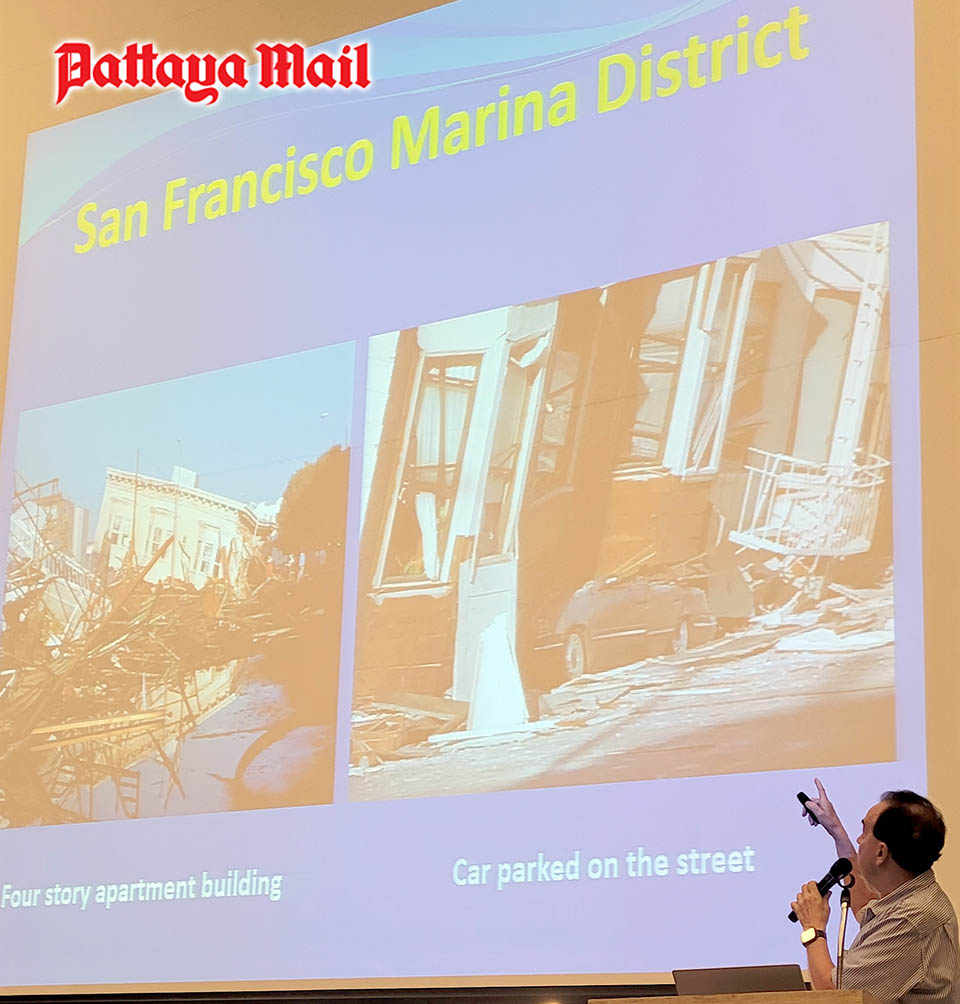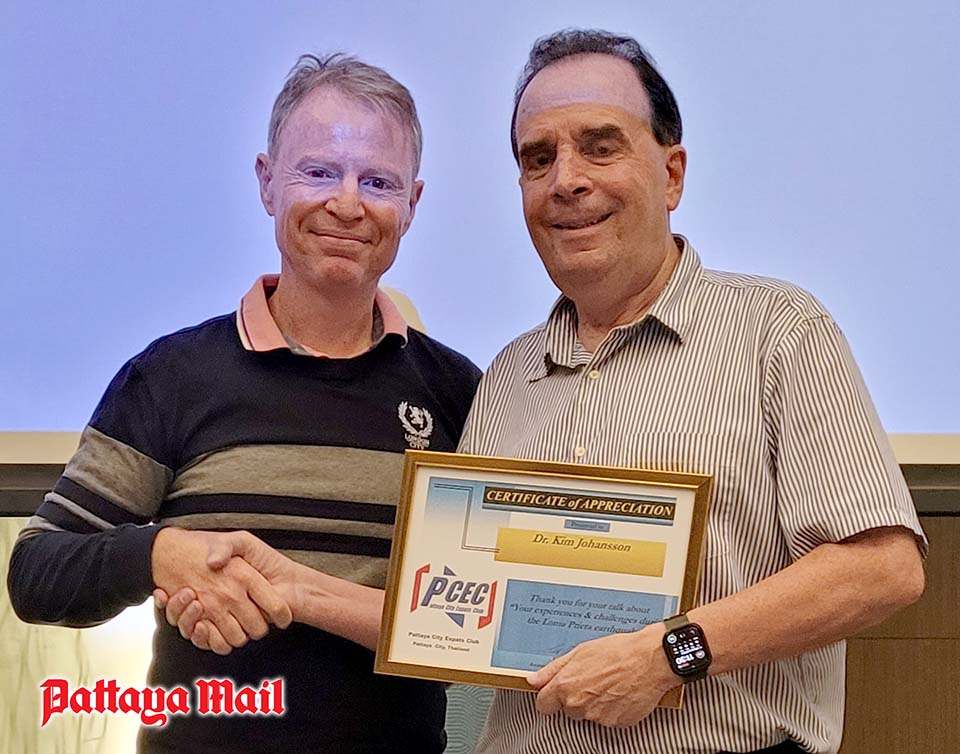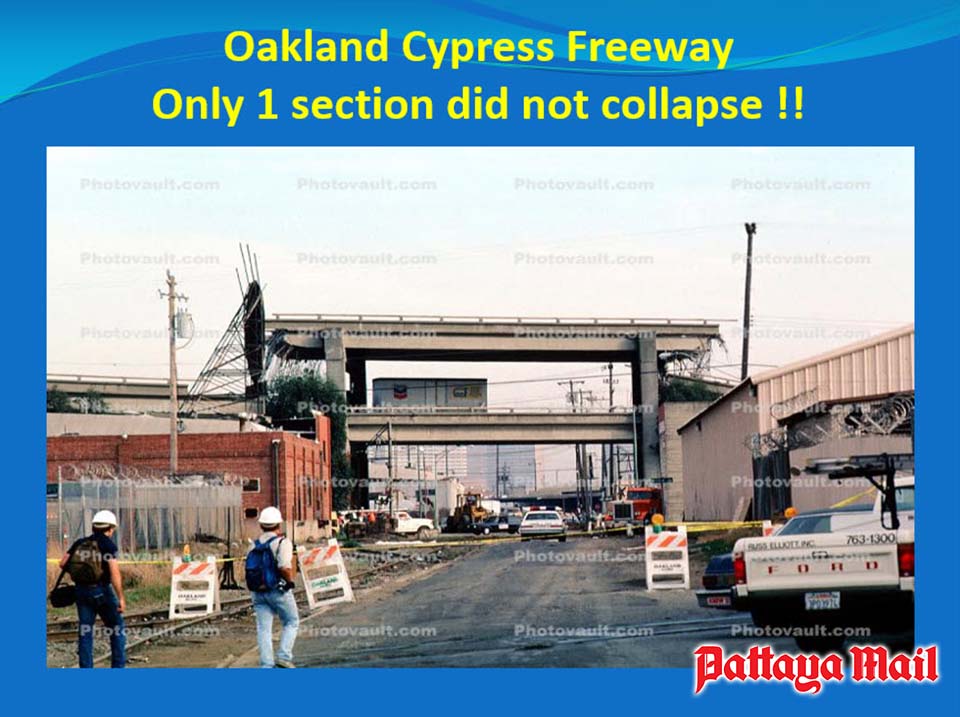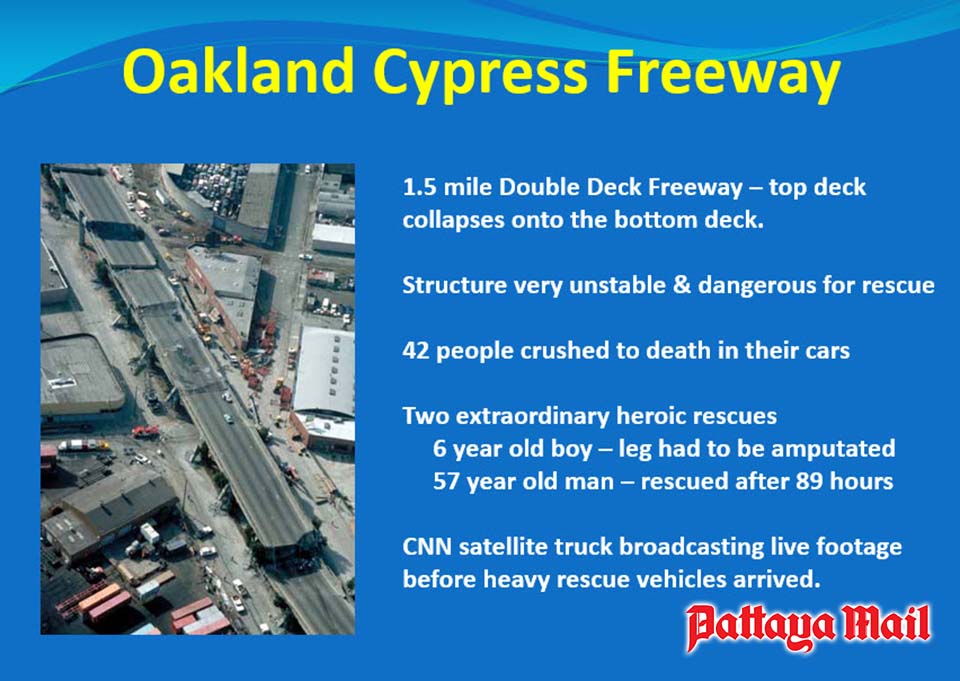
It was a very attentive audience at the Wednesday, November 16, Pattaya City Expats Club (PCEC) meeting as they learned the devastating effects of a severe earthquake in a heavily populated area along with the challenges faced by emergency services in the aftermath.
The speaker was Dr Kim Johansson who has a Doctorate in Public Health and a long and distinguished career in the field of emergency medical services. He served as Chief of the San Francisco Ambulance for 18 years and shared his experiences and challenges during the 1989 earthquake in the San Francisco area: 5:04pm, 15 seconds in duration, 6.9 to 7.0 on the Richter Scale.
He mentioned that although it occurred during what would be normally a rush hour traffic period, the traffic was much lighter than usual because as many had left work earlier to watch game 3 of the World Series taking place in San Francisco. With the aid of several slides and photos, Dr Kim described the devastating effects of a major earthquake on a major city and the heroic work of emergency service workers that responded. He spoke about the complexities they faced, the heroism demonstrated by many, and the lessons they learned.

The complexities included getting the necessary resources into San Francisco as the Bay Bridge and the Cypress Freeway (elevated) had sections collapsed. There were major fires, no water or electricity for 1 – 4 days, natural gas lines ruptured, telephone system overloaded making it very difficult for emergency responders to communicate, many fire hydrants were not working, etc. One good feature in San Francisco was after the 1906 earthquake the city had constructed under water reservoirs under some streets. They had to use jackhammers, but were able to tap into this source of water for fighting the fires.
He described two extraordinary heroic rescues. One, a 6 year old boy who was conscious and trapped under the seat of his dead mother. His mother had to be cut in half with a chain saw to gain access and the boy’s lower leg needed to be amputated to free him from the car. This took 4 hours with a firefighter, paramedic and surgeon working in a very small confined space. The other was a trapped man was found by using heat and sound sensors put into drilled holes. It was fortunate they found him as all rescue efforts were scheduled to cease after 96 hours. It took 6 hours to rescue the man.

As to lessons learned, he explained why paper planning doesn’t work, instead one needs to “train, train, train”. Although their command structure was good, they still needed to improvise; essential emergency systems need at least two backups. Further, outside help may not be available for days and cellular phones need to have a way to restrict or give priority to emergency responders. On the human side, it is essential to have critical incident stress debriefings.
At the conclusion of his talk, there were many questions and comments with one member saying he thought the presentation was brilliant. Thus, you the reader may wish to view the entire presentation which is available on the PCEC’s YouTube channel at: https://www.youtube.com/watch?v=D1Arrom201s. For more information about the PCEC, visit their website at: https://pcec.club/.
Why is he in Thailand, one may ask. In 2000 he began serving as the Director of Health & Safety for the 20th World Scout Jamboree held in Sattahip which was a 3 year project. As with many of us Expats, he came, he saw, and he stayed.

 |
 |
 |





